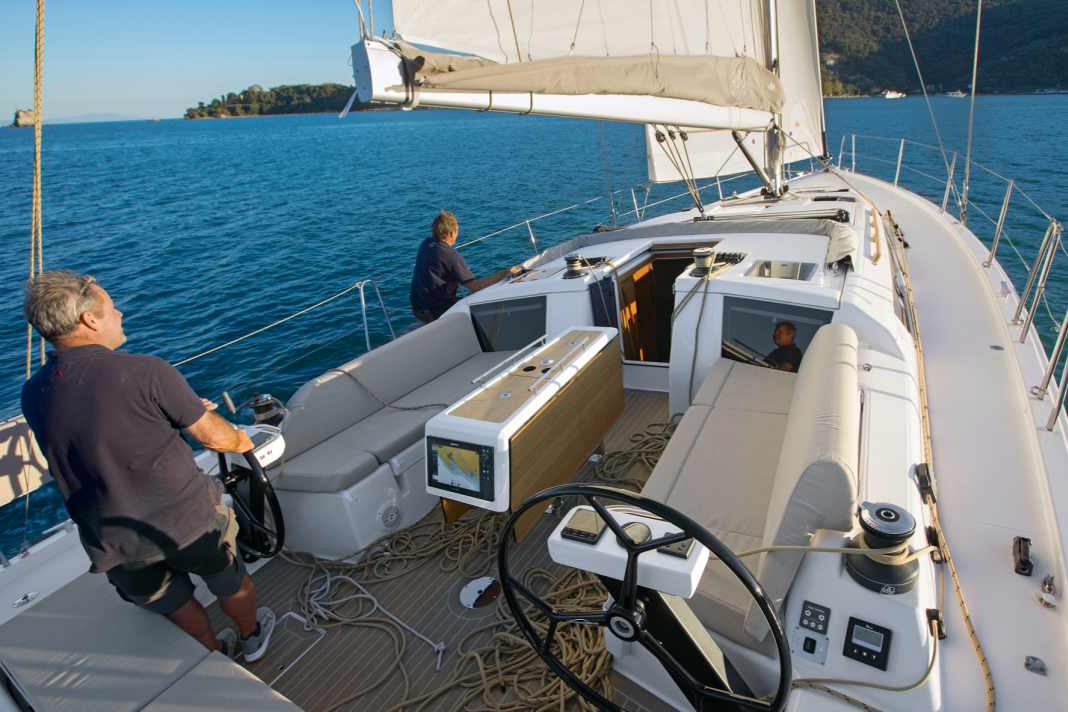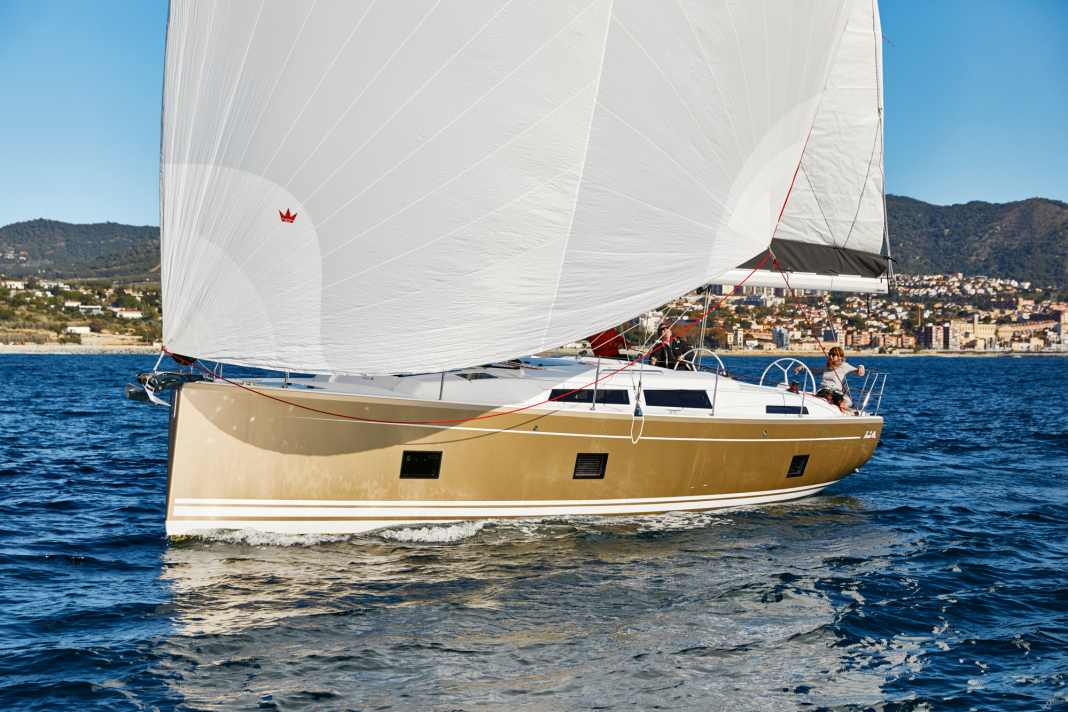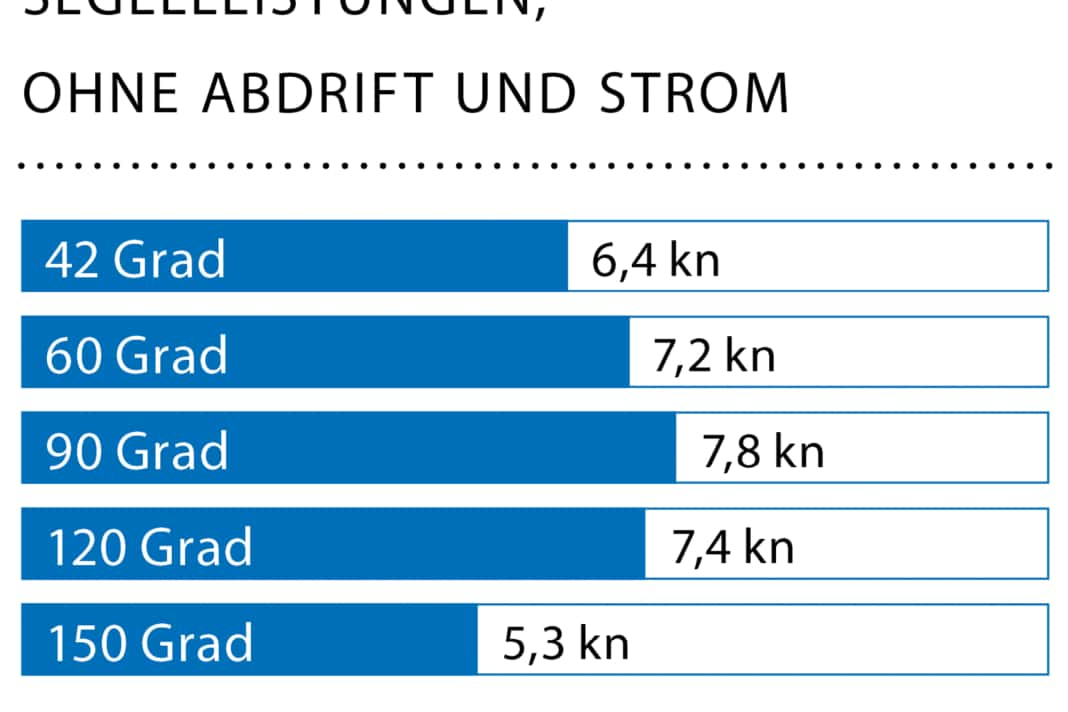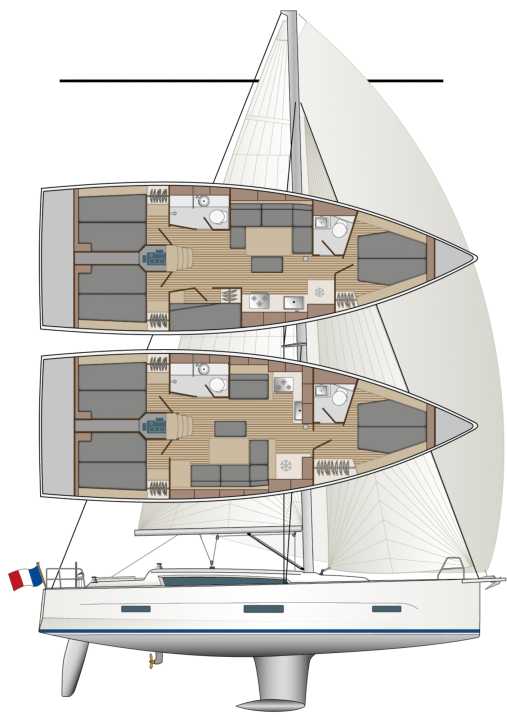





- Strong even in light winds
- First think, then act
- The competition of the Dufour Grand Large 430
- More boat, more possibilities
- Too narrow for two
- Longer, but also more expensive
- The measured values for the test of the Dufour Grand Large 430
- The Dufour Grand Large 430 in detail
- Used boat price and shipyard
- YACHT review of the Dufour Grand Large 430
Two boats, same concept. In spring 2018, Dufour Yachts announced two new developments for the Grand Large touring range - both were boats for particularly important length classes: the Grand Large 390 for the eleven-metre hull length segment and the larger Grand Large 430 as new competition for the highly competitive twelve-metre class. The YACHT test editors were able to thoroughly inspect the two models, which are almost identical in appearance at least, in Italy at the same time, which ultimately made interesting cross-comparisons possible.
Also interesting:
The boats have not been produced since 2024. Nevertheless, it is worth taking a look at the YACHT test of the new boat at the time to determine sailing characteristics, data and other parameters if you are interested in a used Dufour Grand Large 430.
The test ship showed none of the weaknesses criticised in the test of its little sister. On the contrary: the larger ship once again fulfils the well-known good shipyard standards in terms of design and execution in general as well as in detail, which at the same time fuels the hope that the prototype of the 390 was actually just an unpleasant slip-up in terms of quality.
Strong even in light winds
A light sea breeze in the bay of La Spezia provides good enough conditions for testing the Dufour Grand Large 430. The extremely voluminous design by Umberto Felci with its high freeboard, full front section and wide stern quickly converts the low pressure into speed. And the test boat with the standard deep keel of 2.10 metres also runs at a good height. In winds of just under 10 knots, the new boat manages a speed of 6.4 knots at a tacking angle of around 85 degrees.
The test boat benefits from better sails with a 106 per cent overlapping genoa. The performance-enhancing upgrade is part of the Grand Prix package, together with a backstay tensioner, line-adjustable centreboards and the double-sided mainsheet (German Cupper System). As standard, the Grand Large 430 is more simply equipped, with a self-tacking jib and only the most necessary trim equipment.
In any case, the traveller on the cabin superstructure is already installed ex shipyard, as is the permanently attached bowsprit, which also serves as an anchor holder. Unfortunately, neither a Code Zero nor a gennaker was available for the test. And yet: with half the wind and only a genoa, the log still shows a value of 7.8 knots, which is already very close to the theoretical hull speed.
First think, then act
The perfectly tuned steering makes it easy to steer the boat cleanly downwind, especially as the large rudder blade, which is mounted relatively far below the hull, also provides good feedback for the helmsman. The helmsman can also easily reach the sheet winches from his position, which are mounted on the coamings far aft in the cockpit; sailing with a small crew or single-handed is therefore easy. If the Dufour is equipped with a large genoa and German-Cupper mainsheet, both sheets run onto the aft winches and must be alternately disconnected when tacking and jibing. The handling requires some practice and an overview, but ultimately works quite well. However, there are a lot of lines aft, especially if the boat is also equipped with a gennaker or code zero. However, there are no large lockers in the cockpit.
The semi-enclosed stern section with side access to the bathing platform is now an unrivalled standard feature of the Dufour Yachts cruising programme. With a width of 2.50 metres and a depth of just under one metre, the bathing hatch is huge and is even ideal for sunbathing. When open, the platform is about 50 centimetres above the surface of the water.
The competition of the Dufour Grand Large 430




This is a reasonable height for getting in and out of the harbour and still practical for swimming. However, the platform is relatively heavy, and raising and lowering it using the simple buoy hoist requires strength. An electric drive for this is available as an option and is also recommended.
The Dufour Grand Large 430 is fitted as standard with a simple two-spar rig from Z-Spars with external upper and lower shrouds. However, no recesses are provided in the hull for the solid, externally bolted puttting plates. The fittings protrude accordingly, which not only looks unattractive, but could also pose a problem when entering narrow harbour boxes. Rubbing strakes are not even provided as an option. The main boom is attached very low on the mast and rises aft. This may take some getting used to from the outside, but it has decisive advantages in terms of handling, especially when hoisting the mainsail into the lazybags.
More boat, more possibilities
Dufour builds the hull as a full laminate in hand lay-up. The deck is manufactured using the vacuum injection method, which ensures good insulation, both as soundproofing and against heat or cold. As already criticised in the test of the Dufour 390, Dufour manufactures the hulls of all boats up to 46 feet without a collision bulkhead in the foredeck, including the Grand Large 430. Although the so-called crash box is not mandatory, it does provide a certain degree of safety in the event of a collision.
With a hull length of 12.50 metres, the Dufour Grand Large 430 is around 50 centimetres longer than comparable vessels from the large shipyard series. Although Dufour's concept ignores the possible tax advantages for ships with a hull length of less than twelve metres, it is still able to compete with an unprecedented extension variant.
In addition to the standard class layout with three cabins and two heads, Dufour is offering a layout with an additional guest cabin attached to the side with two berths one above the other. Judging by the plans, however, it will be very cramped for two people. With four possible double cabins, Dufour can define standards in the class and is thus primarily targeting the charter business.
Too narrow for two
The layout with three cabins and two bathrooms is attractive for owners, especially as it also offers an unusual arrangement - the galley is located directly at the front of the main bulkhead as a transverse functional line. The French boat builders have already implemented this arrangement in a similar form on larger boats, for example on the Grand Large 460. The two opposing U-shaped work niches ensure a good footing and perfect opportunities to hold on while at sea. And compared to a conventional L-pantry, the galley as a whole has larger work surfaces and more storage space.
In the foredeck, the island berth is positioned quite far into the bow, which limits the width of the berth to just 1.25 metres at shoulder height. This means that two people cannot sleep comfortably here. By way of comparison, the bed in the smaller Dufour 390 is installed in the foredeck as a triangle and offers a considerable sleeping area of over two metres at shoulder height. Unfortunately, this option is not available as an alternative for the larger boat.
The two symmetrically arranged aft cabins offer more space for sleeping. The width of the sleeping area here is 1.68 metres, which is above average compared to the competition. And this is despite the fact that Dufour has installed an approximately 50 centimetre wide channel between the cabins for the on-board technology.
The Dufour Grand Large 430 is bright, friendly and cosy below deck. The large window areas in the hull and on the cabin superstructure ensure a light-flooded and pleasant ambience in the saloon and cabins during the day; you can feel at home here. In addition, there are usable storage spaces in all areas and good ventilation, apart from the lack of cross ventilation in the galley.
Longer, but also more expensive
With the 430, Dufour Yachts wants to stand up to extremely strong competition in an important length segment. This can succeed because the imaginative boat offers unusual variance, which is equally interesting for owners and the charter business. The fact that the quality of detail workmanship is ultimately right is reassuring and takes some of the wind out of the sails of criticism of the little sister.
The measured values for the test of the Dufour Grand Large 430






The Dufour Grand Large 430 in detail

Technical data of the Dufour Grand Large 430
- Design engineer: Umberto Felci
- CE design category: A
- Torso length: 12,50 m
- Total length: 13,24 m
- Waterline length: 11,69 m
- Width: 4,30 m
- Draught/alternative: 2,10/1,75 m
- Mast height above waterline: 17,50 m
- Theoretical torso speed: 8.3 kn
- Weight: 9,7 t
- Ballast/proportion: 2,6 t/27 %
- Mainsail: 52,0 m2
- Self-tacking jib: 31,0 m2
- machine (Volvo P. ): 37.5 kW/51 hp
- Fuel tank (plastic): 250 l
- Fresh water tank (plastic): 430 l
- Holding tanks (plastic): 2 x 50 litres
Hull and deck construction
Hull: GRP full laminate, manufactured in hand lay-up. Deck: GRP sandwich construction with foam core, manufactured with vacuum injection
Used boat price and shipyard
- Used boat price: around €300,000 (depending on the year of construction and history of the boat)
As of 10/2024, how the prices shown are defined can be found here!
Shipyard
Dufour Yachts, 17187 Perigny (France); www.dufour-yachts.com
YACHT review of the Dufour Grand Large 430
Well thought-out and coherent touring concept from Dufour. Although the boat is somewhat larger than most competitor boats, it also offers more variance in terms of interior design - up to four double cabins are possible
Design and concept
- + Convertible expansion concept
- + Very solid construction
- - No collision bulkhead in the forecastle
Sailing performance and trim
- + Runs fast and high upwind
- + Single-handed cockpit layout
- + Reaction-intensive control
Living and finishing quality
- + Bright, friendly living ambience
- + Qualitatively impeccable workmanship
- - Foredeck berth too narrow in width
Equipment and technology
- + Multifunctional bowsprit
- + Back boxes with plenty of space
- - No line chests in the cockpit
The article was first published in 2019 and has been updated for this online version.

